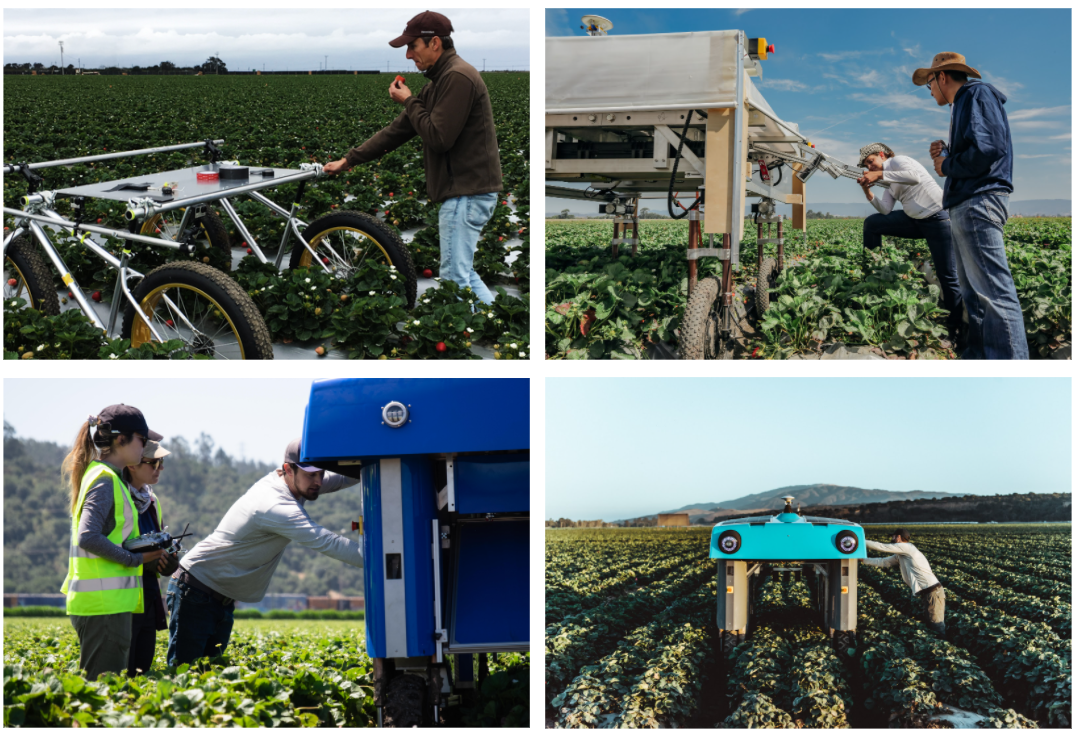Bringing the era of computational agriculture to life
Elliott GrantFounder, CEO
| 4 min read
New tools for a new way of seeing the plant world
Mineral, born as a project from X, the moonshot factory, embraced X’s core belief that 10x growth is easier than 10%. This might sound counterintuitive but it’s a recognition that by trying the same ideas and tools that plenty of smart people tried before us, it’s unlikely we’ll make more than incremental progress, no matter how hard we work. 10x thinking unlocks a new way of approaching these problems. It gives us the courage to ask questions that may once have been seen as laughable, yet have the potential to bring about a completely different way of seeing the world. In its 5+ years within the moonshot factory, Mineral incorporated many of X’s philosophies into its DNA, and that thinking helps to guide Mineral to continuously think in a differentiated way on how to apply the latest in ML and AI to advance agriculture.
The invention of the compound microscope wasn’t just an innovation. It was a revelation. It prompted scientists to explore the microstructure of plants and discover the existence of cells; it led to the discovery of bacteria and ultimately to the insight that bacteria and other microorganisms were the cause of many illnesses — overturning the belief that ‘bad odors’ made people sick. Transformations like those can’t happen without new tools that shift our perspective.
Just as the microscope led to a transformation in how diseases are detected and managed, we hope that better tools will enable the agriculture industry to transform how food is grown”
Just as the microscope led to a transformation in how diseases are detected and managed, we hope that better tools will enable the agriculture industry to transform how food is grown. Over the last few years my team and I have been developing the tools of what we call computational agriculture, in which farmers, breeders, agronomists and scientists will lean on new types of hardware, software and sensors to collect and analyze information about the complexity of the plant world.
Dust, Sweat and Experiments
Our project started with the insight that in order to grow food sustainably on a global scale, new tools will be needed to manage the staggering complexity of farming. Alongside experts in the field — literally and figuratively — we’ve been developing and testing a range of software and hardware prototypes based on breakthroughs in artificial intelligence, simulation, sensors, robotics and more. From strawberry fields in California to soybean fields in Illinois, we’ve been learning about crops from sprout to harvest, so we can find new ways to help breeders and growers understand how plants grow and interact with their environment.
These experiments, adventures and failures prompted us to ask a lot of 'what if’ questions: What if every single plant could be monitored and given exactly the nutrition it needed? What if we could untangle the genetic and environmental drivers of crop yield? What if we could measure the subtle ways a plant responds to its environment? What if we could match a crop variety to a parcel of land for optimum sustainability? We knew we couldn’t ask and answer every question — and thanks to our partners, we haven’t needed to. Breeders and growers around the world have worked with us to run experiments to find new ways to understand the plant world.

Our technology has evolved as we’ve learned in the fields, from strawberries to soybeans.
Mineral: The invisible links supporting life on Earth
As our prototypes evolved, we took on the name Mineral. We choose this name as an homage to the essential role minerals play in sustaining life on Earth. Minerals are the invisible links in our food chain, connecting us, plants and soil. Minerals such as zinc, iron and magnesium are essential to our health, but they can’t be synthesized by the human body. So, instead, we get these essential minerals by eating plants or by eating animals that eat plants. The plants absorb minerals through their roots as mineral ions dissolved in the soil water. Those minerals had been released by bacteria and fungi that had weathered rocks. It’s a staggeringly complex ecosystem.
Our team name reflects our embrace of that complexity and our mission to build tools that make it possible to see and understand the plant world in radically new and different ways. We hope our tools will enable others to ask their own 10x questions so together we can build a more sustainable, resilient and productive food system.